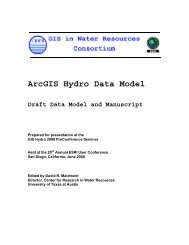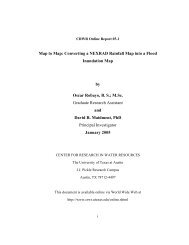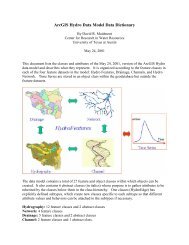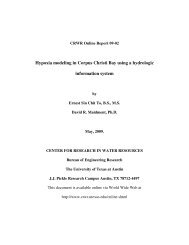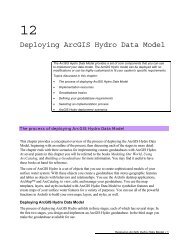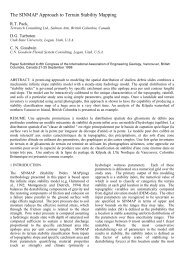View the Whole Report - Center for Research in Water Resources ...
View the Whole Report - Center for Research in Water Resources ...
View the Whole Report - Center for Research in Water Resources ...
You also want an ePaper? Increase the reach of your titles
YUMPU automatically turns print PDFs into web optimized ePapers that Google loves.
Total Suspended Solids<br />
The analysis <strong>for</strong> TSS was conducted accord<strong>in</strong>g to <strong>the</strong> procedure outl<strong>in</strong>ed <strong>in</strong><br />
Standard Methods <strong>for</strong> <strong>the</strong> Exam<strong>in</strong>ation Of <strong>Water</strong> and Wastewater (1992) section 2540 D,<br />
Total Suspended Solids Dried at 103-105 o C. Initially, 20 to 30 mL of distilled water are<br />
passed through <strong>the</strong> filter. The filter is dried <strong>in</strong> an oven <strong>for</strong> 1 hour, allowed to cool <strong>in</strong> a<br />
desiccator <strong>for</strong> 15 to 20 m<strong>in</strong>utes, and weighed. A Whatman grade 934AH filter and a<br />
filtration apparatus which is <strong>the</strong> equivalent of a Gelman No. 4201 was used <strong>for</strong> filter<strong>in</strong>g<br />
<strong>the</strong> samples.<br />
Subsequently, 10 to 100 mL of <strong>the</strong> water sample was filtered. The solids reta<strong>in</strong>ed<br />
on <strong>the</strong> filter and <strong>the</strong> filter are dried <strong>in</strong> an oven at 103 o C <strong>for</strong> 1 hour and cooled <strong>in</strong> a<br />
desiccator <strong>for</strong> 15 to 20 m<strong>in</strong>utes. The residue and <strong>the</strong> filter are weighed, and <strong>the</strong> total<br />
suspended solids are calculated as:<br />
mg total suspended solids/L =<br />
(A - B) x 100<br />
sample volume (mL)<br />
where: A = weight of filter + dried residue, mg, and<br />
B = weight of filter, mg.<br />
Duplicate samples were analyzed <strong>for</strong> every tenth TSS analysis as a quality control<br />
measure, and <strong>the</strong> average of <strong>the</strong> results was reported.<br />
Turbidity<br />
Turbidity is def<strong>in</strong>ed as an “expression of <strong>the</strong> optical property that causes light to<br />
be scattered and absorbed ra<strong>the</strong>r than transmitted <strong>in</strong> straight l<strong>in</strong>es through <strong>the</strong> sample”<br />
(Standard Methods <strong>for</strong> <strong>the</strong> Exam<strong>in</strong>ation of <strong>Water</strong> and Wastewater, 1992), and commonly<br />
is used as a standard <strong>for</strong> assess<strong>in</strong>g <strong>the</strong> clarity of water designated <strong>for</strong> human consumption<br />
and manufactur<strong>in</strong>g usage. The extent to which suspended silts and clays, organic and<br />
<strong>in</strong>organic matter, and microscopic organisms are present <strong>in</strong> a sample def<strong>in</strong>es <strong>the</strong> clarity<br />
and <strong>in</strong> turn <strong>the</strong> turbidity of a sample (Standard Methods <strong>for</strong> <strong>the</strong> Exam<strong>in</strong>ation of <strong>Water</strong> and<br />
Wastewater, 1992).<br />
97




